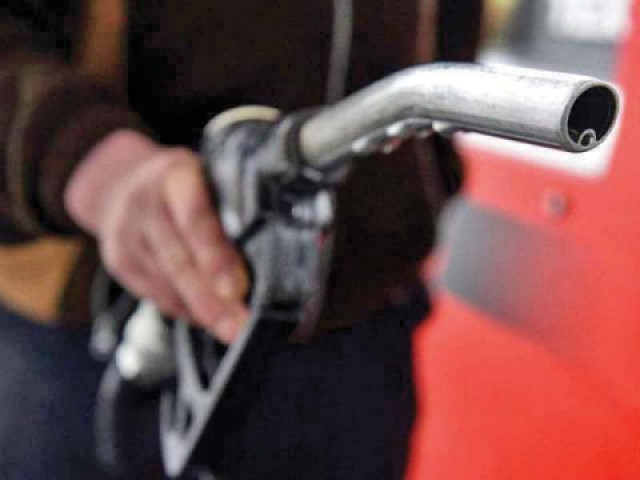Despite price hike: Petrol and diesel still cheaper
Prices in Pakistan remain lower when compared with region and elsewhere

Petrol prices were increased on July 15 by Rs5.40 to Rs118 per litre, while diesel prices were raised by Rs2.54 to Rs116.53 per litre.
In dollar terms, petrol and diesel prices have come down over the last four to five months, although international prices have increased over the same period.
On February 15, Pakistan’s petrol prices were at $0.729 per litre and diesel prices at $0.703 per litre and on July 12, prices came down to $0.707 per litre for petrol and $0.715 per litre for diesel.
The current increase of Rs5.40 and Rs2.54 in petrol and diesel prices respectively has kept price dynamics the same.
The lower income group is protesting as it earns in rupees and not in US dollars. It is the exchange rate depreciation in Pakistan that petrol and diesel prices appear to be high.
Otherwise, Pakistani prices have been and still are on the lower side. Even when compared with Bangladesh, petrol prices there are 49% higher and diesel prices 7% higher.
In Sri Lanka, petrol prices are 31% higher, but diesel prices are 78% of Pakistan’s prices ie 22% lower.
Pakistan’s exchange rate on July 15 stood at Rs159 to the US dollar and India’s at INR74.55 per dollar. Thus, Indian rupee converts to 2.13 Pakistani rupees.
In India, petrol prices are INR101.7 (Kolkata) and INR107.5 (Mumbai) per litre. Diesel prices in Kolkata are INR101.7 and Mumbai INR107.5. Thus, India’s petrol prices are 96% higher than Pakistan’s and diesel prices are 76% higher.
In India, petrol and diesel prices are changed daily and prices are different in different cities and regions. We have quoted rates of low-price regions.
Also, more than 90% of petroleum market in India is handled by three public sector companies. However, despite an unregulated pricing regime, prices remain comparable among companies.
Internationally, oil pricing policies can be classified into four categories: lowest prices in oil exporting countries of the Middle East, low oil-price countries between the lowest and US benchmark prices, above US benchmark and below the highest-priced countries in Europe, and highest-priced countries like Norway, Sweden, etc.
In Germany, with relatively moderate prices and taxation, the current gasoline prices stand at $1.834 per litre and diesel prices at $1.649.
American oil prices are taken as a benchmark as these are stable and least taxed among developed countries and market economies. Current diesel price in the US is $0.862 per litre and petrol price is $0.922.
Pakistan prices used to be in category-III, but now the country is in category-II of low prices.
Another general trend in pricing policies has been that diesel is almost universally taxed lesser than petrol. The argument has been that diesel is used in public and goods transport and has welfare and competitiveness implications.
In Pakistan also, this used to be the case. For some years, the policy has been changed on lines as it is in the US of no differential treatment. There is a need to reconsider this policy in Pakistan.
Admittedly, the political impact of increase in petrol prices is direct and immediate, but within no time the impact of diesel prices results in higher consumer prices of commodities, causing inflation.
The combined petrol and diesel consumption in Pakistan is around 16 million tons or 200 billion litres. A tax of Re1 per litre earns the government Rs200 billion. And, it is the easiest way to collect taxes as opposed to other sectors.
In the case of electricity, a Re1 per kilowatt-hour (kWh) increase in power tariff has an impact of Rs100 billion or slightly higher.
The government has been reducing petroleum levy as the international prices increased. It would have been politically impossible to charge the usual levy rate of Rs30 per litre, although budgetary estimates have assumed Rs30 per litre.
Continuous pressure on international oil prices will cause price inflation in Pakistan. The International Monetary Fund (IMF) has kept on asking to charge higher taxes.
International oil price forecast
On July 15, crude oil prices (Brent) sank 1% on anticipated supply increase. They dropped 73 US cents to $74.03 per barrel by midday, as published by Reuters.
The Brent crude oil prices averaged $73 per barrel in June 2021, up $5 from May. June was the first month when the Brent prices averaged more than $70 since May 2019.
In Q2 of 2020, Brent oil prices dipped briefly to $30 per barrel from $50 per barrel in Q1. From then onwards, oil prices have kept on increasing and peaked to $75 by mid-2021.
The forecast is that oil prices will slide down from the peak of $75 per barrel continuously in Q3 and Q4 of 2021 to slightly under $70 per barrel and the downturn would continue in 2022 to reach $65 per barrel by Q4 of the year.
It appears that the worst in terms of short-term oil prices has gone and easier days are coming for the government and people of Pakistan.
The writer is former member energy of the Planning Commission and author of a number of books on the energy sector.
Published in The Express Tribune, July 19th, 2021.
Like Business on Facebook, follow @TribuneBiz on Twitter to stay informed and join in the conversation.



















COMMENTS
Comments are moderated and generally will be posted if they are on-topic and not abusive.
For more information, please see our Comments FAQ